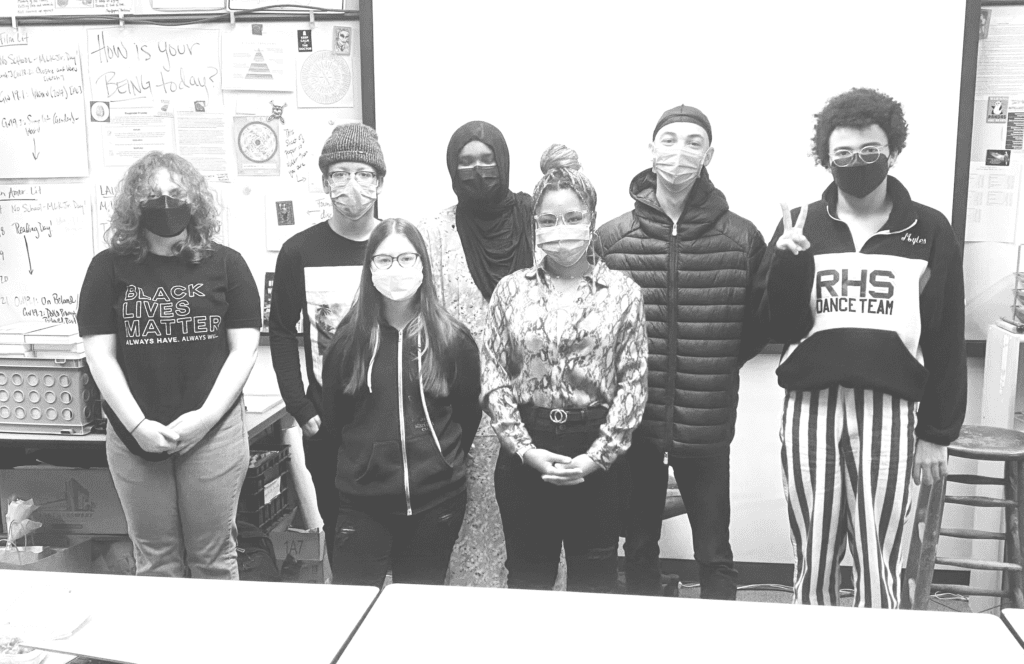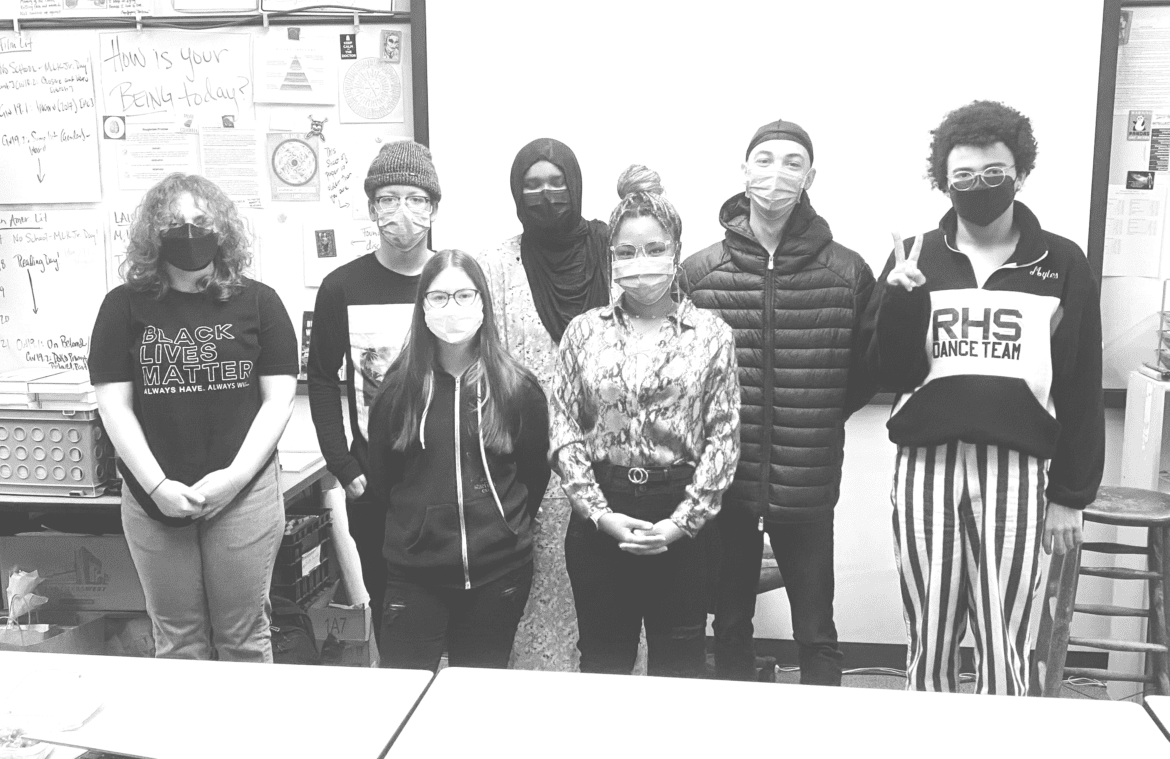
Members of Black Student Union gather together for a group photo. From left to right: Hazel Graham, Oryon Cain, Talia Cruz, Fartun Abdullahi, Jeliyah Sherman, Brandon Johnson, Myles Mawa
Halfway through February, Black Lives Matter at Schools week has officially passed within the Roosevelt community. In this timeframe, the 13 Guiding Principles of the Black Lives Matter Movement were highlighted.
For Roosevelt, this week is fairly new — first introduced in 2019. Last year, the 13 principles were introduced in the BLM curriculum. 100 percent online, teachers used different strategies to introduce these values.
While this was a change in direction for the school, students recalled the lack of interaction between students and teachers during Black Lives Matter week. Shreya Murti, a junior at Roosevelt and co-leader of The Racial Equity Club, recounted her experience from last year, “It felt very robotic,” and “It wasn’t as impactful as it could’ve been.”
However, the curriculum presented this year outlined a new take from what the school had seen since 2019 during BLM at Schools Week.
Stepping into a leadership position, students were actively involved during the week, playing a key role in the curriculum. Senior Myles Mawa affirmed the importance of student voices specifically in these lessons, “Because these students have a lot to say,” he continues, “Now there’s finally a way to take that and broadcast that to the school.”
While students had a higher level of participation, teachers saw the opposite. “Mr. Hollins is trying to actually take the power away from teachers for this week and try to inspire and encourage student empowerment,” says Mawa, validating the desire for active student engagement.
The idea behind the week panned out in early January when Principal HkwauaQueJol Hollins held a meeting with Roosevelt’s affinity clubs. Senior Francoise Musafiri’s, member of the Black Student Union (BSU), was one of the handful of students in attendance. She says that the proposal that went through came to be with “Mr. Hollins sharing the ideas that he had and then us giving him our inputs.”
This proposal was then played out from Monday, Jan. 31 through Thursday, Feb. 3.
Spanning through these four days was a panel discussion held by members of BSU and other joining students on topics around the 13 Guiding Principles of the BLM movement, with a set of new principles for the following day. Held on Zoom and presented to the school in a designated period for each day, students were able to listen in on the discussion and the surrounding ideas around the subject.
These topics included restorative justice, diversity and globalism, what it means to be queer and/or trans affirming and being an unapologetically Black woman today. With the panelists in the same room, the chance to speak was opened as each question surrounding these themes was presented. Also presented were definitions on relevant terms for viewers that weren’t familiar.
Through this dialogue, many goals were hoped to be reached and exceeded in the timeframe given.
“Normalizing difficult conversations and also at the same time celebrating Black voices,” is what Musafari was aiming for, while also “understanding the intersectionality between different things or different topics.”
For Mawa, however, this project is a call to action with an objective to “show people how this can weave into their studies the entire year.” Hoping to eliminate the mindset that people only have to be engaged in Black Lives Matter curriculum for this week, he hopes students can take the first step of acting on the conversation’s topics.
This idea was highlighted specifically at the end of the panels, where the facilitators would leave final thoughts for the viewers to think and act on. On the first panel, the audience was asked to think about how they personally acted when something unjust happened in their community, while on the third day the closing question centered around intersectionality of one’s own identity. These closing statements helped to continue the conversation outside the panels.
On the final day of Black Lives Matter at Schools week, a film was presented to 6th period classes as the weekend approached. Created by RARE, the Roosevelt Alumni for Racial Equity, the history of race at Roosevelt was explored. With a closer connection to the film as it surrounds the students’ own school, the week ended on a more personal note.
While Black Lives Matter week may have ended, students can continue to amplify Black voices, celebrate Black achievements, and educate themselves, applying gained knowledge from the week to their lives.
